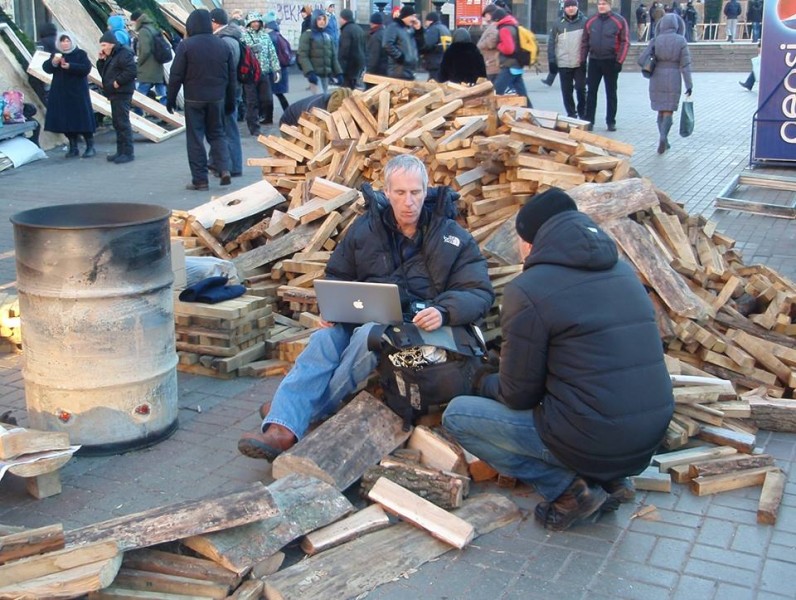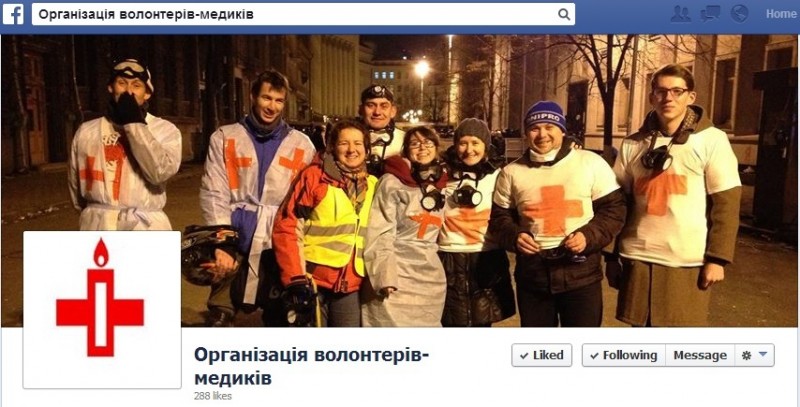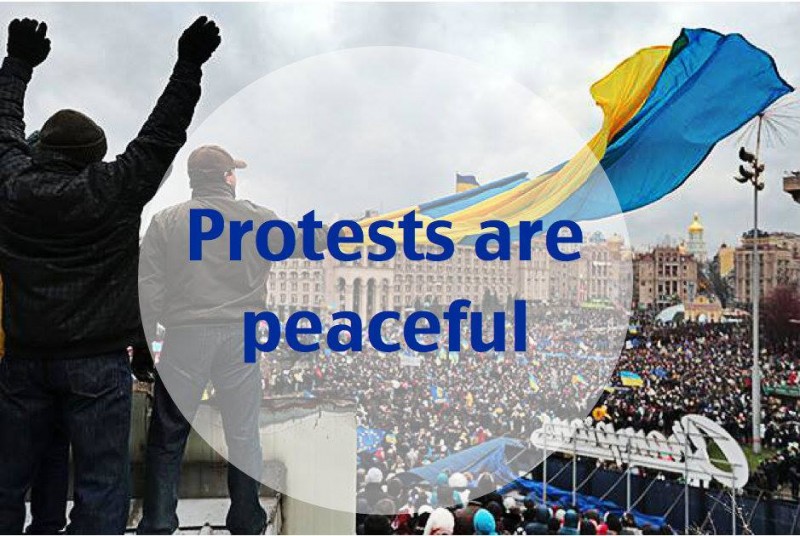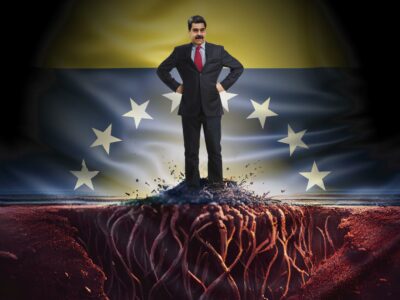This post is part of our Special Coverage Ukraine's #Euromaidan Protests.
As Euromaidan protests enter their third week in Ukraine, social media and technology still play a key role in their organization. As the government violently cracked down on peaceful protesters on November 30, the eight day of the protests, this has turned into a mass anti-government movement in the country and has begun to resemble the 2004 Orange Revolution in many ways.
One of the major differences, however, between Euromaidan and the 2004 protests has been the use of new media, social networks and other IT tools for organizing and sustaining the protests.

A man opens his laptop while sitting on chopped wood amid protesters in Kyiv, Ukraine. Photo by Dima Kravchuk. Dec. 5, 2013. Used with permission.
Since the beginning of the protests, Facebook in particular has played a central role in organizing protesters and informing wider audiences about the latest developments. The first gathering of protesters, organized in Kyiv on the eve of November 21 and which was immediately dubbed Euromaidan (European Square), was sparked by the appeals of several journalists and civil activists, including Mustafa Nayyem [uk], a contributor of the leading independent online news outlet Ukrainska Pravda.
Organizing protesters through Facebook and Twitter
Facebook and Twitter soon became the key platforms for coordinating protest activities and sharing information. The now official EuroMaidan Facebook page [uk] set a new record in Ukraine [uk], having accumulated 76,000 likes in just the first eight days of its existence. The page is used to inform protesters about urgent news and issues, discuss plans of future actions, warn against using violence, share advice on how to deal with police forces, and much more. It has currently reached over 141,000 likes and over 167,700 interactions. An English-language page Euromaidan has also been set up, along with regional pages like Euromaidan Lviv [uk].

A screenshot of an official Euromaiden protests Facebook page. The inscription on the cover page quotes the country's constitution: “The people shall be the bearer of sovereignty and the sole source of power in Ukraine”[uk].
Before these leading social media accounts emerged and accumulated their audience, users largely relied on hashtags (#Євромайдан in Ukrainian and #Евромайдан in Russian) to share information. To help gather all relevant information and social media posts in one place, activists put together several websites with social media aggregators and useful links. Among them are Euromaidan.eu [uk], Euromaidan.tk [uk, ru, en], Euromaidan.com [ru], Maidan.in.ua [en].
“Euromaidan – SOS”: Tracking repression and offering timely help
Following beatings of protesters by riot police and the first arrests, additional Facebook pages and groups emerged to meet the growing need for medical and legal assistance, as well as for spreading basic information to keep protesters safe.
![Facebook page of "Euromaidan-SOS" - a group offering free legal assistance to victims of police violence or arrested on #Euromaidan. A caption on the cover image reads: "Human rights above all" [uk]. Dec. 7, 2013. Screenshot by Tetyana Bohdanova.](https://globalvoicesonline.org/wp-content/uploads/2013/12/Euromaidan-SOS-800x497.jpg)
A screenshot of “Euromaidan-SOS” Facebook page, a group offering free legal assistance to victims of police violence or arrests on #Euromaidan. A caption reads: “Human rights above all” [uk].
Ця сторінка створена для надання правової допомоги постраждалим на Євромайдані. Ми юристи громадські активісти та журналісти – оперативно збираємо всю інформацію про постраждалих та тих, хто досі приймає участь у мітингах. А також про юристів, консультантів, які готові надати їм правову допомогу – та повязуємо їх між собою.Якщо у вас пропали родичі чи Ви стали жертвою побиття – НЕ МОВЧІТЬ! Відстоюйте свої права разом з нами!
This page is created to offer legal help for those injured during Euromaidan. We – lawyers, civic activists and journalists – collect timely information about injured and active protesters, as well as about lawyers and consultants ready to offer legal advice, and put them in touch with each other. If your relatives have gone missing or you have become a victim of beating – DO NOT KEEP SILENT! Fight for your rights together with us!
Soon, a separate website, Eurozahyst.org [uk], was also established for the same purpose.
An open Facebook group “The Revolution's Legal Department” [uk] has also been set up to discuss the legal side of Euromaidan-related developments in the country, share ideas and offer legal guidance to those who need it.
Along with lawyers, medical practicioners and students also organized to offer free medical aid to Euromaidan participants. They have set up several Facebook pages including “Організація волонтерів-медиків” (Organization of volunteer doctors) [uk] and Майдан.Медики (Maidan.Doctors) [uk] for organizing medical volunteers, with the first on-the-ground headquarters based in Kyiv's Mykhailivsky Cathedral and on Independence Square, the main gathering sites of the protests.

A screenshot of a Facebook page for a group of volunteer doctors offering free medical aid for Euromaidan in Kyiv.
Crowdsourcing creative ideas and resources
Another Facebook page has been established to gather and share ideas for sustaining and expanding the Euromaidan movement. The Information Center “НЕ ЗЛИй МАЙДАН” (Don't Ditch Maidan) [uk] began as an idea on December 1 at the main protest site in Kyiv, and the Facebook page [uk] was set up four days later. With already more than 3,000 likes as of December 7, 2013, it solicits creative ideas for actions, slogans and posters from Facebook users and shares them with a wider Internet audience. It also interacts with other Euromaidan-related online initiatives.

Image created by Vitaliy Moroz on Dec. 1, 2013 and circulated online. The image conveys a key message about Euromaidan to the world.
In addition, a separate Facebook page “Страйк плакат” (Strike placard) [uk] has been established specifically for sharing creative posters and designs for the protest.
An NGO, “Kyevers for reforms”, launched a crowdfunding initiative on Biggggidea.com, aiming to collect some 12,000 US dollars to help keep Euromaidan protesters in Kyiv warm and fed [uk]. Double this amount was been collected for the project by its December 8, 2013 deadline.
Coordinating volunteers for Euromaidan
Many observers have noted how well-organized the main protest site, Maidan Nezalezhnosti (Independence Square), and the protest headquarters, the Kyiv City Administration building taken over by protesters on December 1, are. In fact, Independence Square has already been barricaded by activists who protect it during the day and patrol it at night. People also bring and serve food there, help provide shelter and medical aid for protesters, while activists also entertain each other with a wide range of activities [photos], from football games to concerts, books and open public lectures [uk] offered by specialists in various areas. While the credit for this goes to the protesters on the ground, activists have also made use of available Internet tools to aid the process.
Website Galas.org.ua[uk] uses crowdmapping to coordinate the needs of Euromaidan participants with volunteers willing to help. A related Facebook page [uk] has also been launched.
Maidanhelp.org serves a similar purpose, crowdsourcing information about current needs of Euromaidan participants.
Solidarity through Internet access
With these and other initiatives emerging every day, it is clear that technology has become one of the keys to coordinating and, more importantly, sustaining Euromaidan protests in Ukraine. During the previous weekend of protests, one of the major Ukrainian Internet providers, Volya-Cable, announced [uk] that it increased the speed of Internet connection for its clients residing in the center of Kyiv and called on them to open Internet access for protesters to use. Many have followed this advice and opened their WiFi connections, while other users released their WiFi passwords [uk] to the public.








39 comments
This is a very good article. Tank you for the break-down of the different pages, twitters and websites for Euromaidan.
Thank you, Ivan. New pages keep popping up every day. Hard to keep up! And it also shows the power of Internet…
Nice article. It does a good job of showing angles that are different from the Washington Post comparison of Euromaidan’s Facebook and Twitter use.
Thank you!
In addition, if you search by “Euromaidan” on facebook there are many pages from other countries. Euromaidan USA, Euromaidan Canada, EuroMaidan Cleveland, Euromaidan Los Angeles, EUROMAIDAN in Montreal, Euromaidan Germany, Sydney EuroMaidan, and much more… Those pages are also distributing (collecting and reposting) a real-time information to communities and coordinating communities’ efforts in support
Oleg, you are right. New pages are being added almost every day. There’s a person who tied to illustrate the geography of Euromaidan on the map. See this GV post: http://globalvoicesonline.org/2013/11/24/interactive-map-of-euromaidan-protests-in-support-ukraines-eu-integration/
Also Euromaidan Detroit (where I am from). There is also the other phonetic spelling of #Euromaydan and the original Ukrainian #Євромайдан that all others retweet. There are numerous Facebook pages in the Ukrainian language that posts more indepth information – especially from inside the Euromaidan (posts for medical help, food, fortifications, etc)
Also
Ukrainians around the globe are plugged in. The #Euromaidan centers in Kyiv, but reaches to US, Canada, Brasil, India, Australia, and all of Europe!